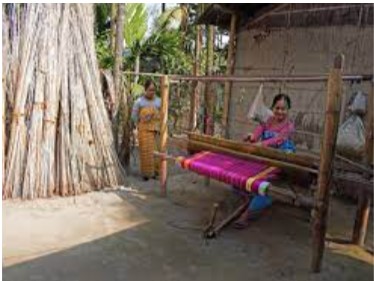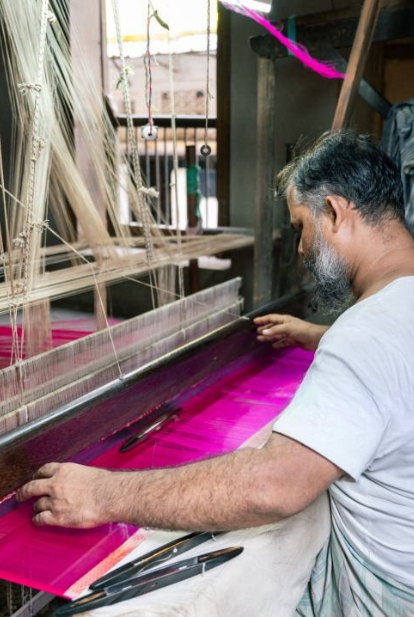Introduction
India is one of the largest textile producers in the world—and at the heart of this industry are two very different technologies: Power looms and Handlooms.
While both produce fabric, the way they operate—and the impact they create—are worlds apart. As conscious consumers seek sustainable and ethical choices, understanding the difference becomes more important than ever.
At Weavehand, we champion handloom products for their quality, soul, and impact. But let’s break it down: what really sets handlooms apart from power looms?
1. What is a Power Loom?
A power loom is a mechanized loom powered by electricity. It is designed for mass production, working fast and often operated in factories.
Features:
-
Machine-run
-
Requires less manual labor
-
High speed = high output
-
Uniform, repetitive patterns
-
Often used in fast fashion and bulk production
While it’s efficient, power loom production is less personal and more commercial in nature.
2. What is a Handloom?
A handloom is a traditional loom operated manually by skilled artisans. Each movement of the shuttle and pedal is guided by human hands.
Features:
-
No electricity used
-
Each piece is unique
-
Slower, but more detailed craftsmanship
-
Environmentally friendly
-
Supports artisan livelihoods
“At Weavehand, every handloom saree or dupatta carries the signature of the weaver behind it.”
3. Key Differences Between Handloom and Power Loom
| Aspect | Handloom | Power Loom |
|---|---|---|
| Operation | Manual, artisan-driven | Machine-operated (electric) |
| Environmental Impact | Eco-friendly, zero emissions | Consumes electricity, higher footprint |
| Uniqueness | Each piece is one-of-a-kind | Mass-produced, uniform designs |
| Employment | Supports rural artisans | More centralized, factory-based jobs |
| Skill Requirement | High; requires years of practice | Low to moderate |
| Cost | Higher due to time & skill involved | Lower due to faster production |
| Durability | Often stronger & longer-lasting | May vary; often lower fabric quality |
4. Why Handloom is Better for Sustainability
Handloom uses natural fibers, low-impact dyes, and zero electricity—making it a leading choice for sustainable fashion in India.
It also supports circular economy models like made-to-order and customization, reducing waste and dead stock.
5. The Soul Behind the Weave
Each handloom fabric carries a story:
-
A grandmother’s technique passed down
-
A motif rooted in folklore or nature
-
A weaver’s emotion, embedded in each thread
Power loom fabrics are functional. But handloom fabrics are emotional.
6. Should You Pay More for Handloom?
Yes—and here’s why:
-
You support an artisan's livelihood
-
You get better quality and durability
-
You invest in the planet
-
You own something no one else does
It’s not just fashion—it’s fashion with purpose.
Conclusion: Choose Wisely, Choose Handloom
The debate between power looms vs handlooms is not just about machines—it’s about values, choices, and future impact.
Power looms will always have their place in mass production. But if you’re looking for authenticity, sustainability, and soul, then handloom is the clear choice.
At Weavehand, we work directly with artisans to bring their handwoven art to your wardrobe—one meaningful piece at a time.
Explore Our Handloom Collection
Shop Handloom Sarees, Dupattas & Accessories →


The history of looms dates back to the Neolithic period (around 6000 BCE), with early evidence found in ancient civilizations like Mesopotamia and the Indus Valley. The warp-weighted loom emerged around 4000 BCE, followed by the heddle loom (2000 BCE), which improved efficiency. The treadle loom, developed in ancient China (25–220 CE), allowed foot control for easier weaving.
The Industrial Revolution brought power looms, automating textile production and enabling mass manufacturing. Today, modern looms—including computerized and mechanical types—offer precision and speed. While power looms serve industrial needs, handlooms continue to be valued for their sustainability, craftsmanship, and cultural significance.



